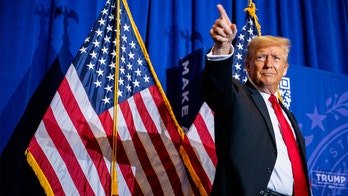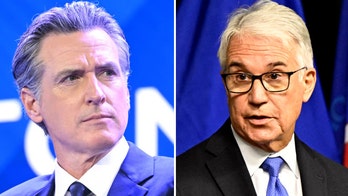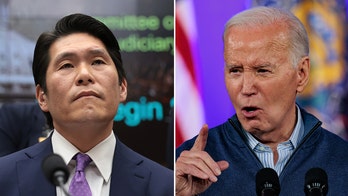
(AP) (AP)
Health care spending rose to a whopping $2.3 trillion in 2008 -- 16.2 percent of the nation's economy -- but Americans paid less than one-eighth of the total spending out-of-pocket while government and private insurers split the rest, according to a newly released government report.
Spending per person totaled $7,681, with individuals paying roughly $912 of that, according to the report by the Centers for Medicare and Medicaid Services. The government and private insurance companies paid for the remaining costs.
The personal cost of health care per household equaled slightly more than what Americans spent on entertainment in 2008 but as a smaller percentage than spending on amusements.
While the total dollars spent on individual health care represented a 4.4 percent hike from $7,423 in 2007, the rate of increase was strikingly slower than in previous, non-recessionary years, according to the analysis. The CMS reported the slowest rate of growth since it officially began tracking expenditures in 1960. Health care costs grew in 2007 at a rate of 6.0 percent, according to CMS.
"It's pretty significant," Micah Hartman, the CMS statistician who co-authored the report, said of the smaller-than-expected increase.
The CMS report states that the major sources of funds were spent by Medicare and Medicaid, private health insurance and out-of-pocket costs. While the private sector pays for the majority of spending, $4,046 per person compared to $3,635 per person by state and federal government, the rate of the increase in costs -- known as the cost curve -- slowed more rapidly for the private sector, most likely because many workers lost their jobs and their private coverage.
Medicare grew the fastest -- 8.6 percent with Medicare Advantage, the plan with extra benefits and lower payments, going up by 21.3 percent over the previous years. Medicare prescription drug spending rose by 10 percent from 2007 even though overall spending only rose 3.2 percent.
The recession "led to slower growth in personal health care paid by private sources of funds, which increased only 2.8 percent in 2008," CMS said in a release that accompanied the report.
"The recession also made it difficult for many Americans to afford private health insurance coverage, leading to lower growth in private health insurance benefit spending, which slowed to 3.9 percent in 2008."
Of the $7,681 spent on individual health care in 2008, approximately $2,358 -- or 30.7 percent -- went to hospitals while $1,628 -- 21.2 percent -- went to physician and clinic services. Ten percent -- or roughly $768 -- was used to pay for retail prescription drugs, while close to $453 went toward nursing home care.
Another $522 went toward administrative costs, while $230 was spent on government public health activities, like inoculation drives. Another $131 accounted for retail spending on nondurable equipment like bandages and over-the-counter medicines.
Hartman said the recession likely forced Americans to use their limited resources for other essential expenditures.
By comparison, the average American household increased its annual food costs by 5.1 percent -- to $6,443 in 2008 from $6,133 in 2007, according to the U.S. Bureau of Labor Statistics.
The BLS, in its October 2009 report, also found that households -- or "consumer units" -- measured as families or couples living together who share expenses or individuals who live together but don't share expenses -- spent 5.1 percent more on entertainment year-on-year, to nearly $2,835 in 2008.
Utility payments on average increased from $3,477 in 2007 to $3,649 in 2008 -- a 4.94 percent increase -- while spending on gasoline went to $3,477 from $2,384, when the price per gallon skyrocketed to $4.11 on average and the price of oil peaked at $147 per barrel.
Americans also spent 4.68 percent more on rental housing in 2008 -- $2,724 annually compared to $2,602 the previous year, according to the bureau.
Americans, however, spent 1.64 less on mortgage interest and charges in 2008 -- with the average annual expenditure at $3,826 in 2008, compared to $3,890 in 2007, according to the BLS. 3.1 million mortgages went into foreclosure filings in 2008, an 81 percent increase from the previous year.
Hartman said that the historically slow rate of increase for health care expenses is helpful or hurtful, depending on which side is examined -- the consumer or the provider of health services.
"If you look at health care spending as an industry, the slower rate of growth means that they earned revenue at a slower rate than they did before," Hartman said. "There's two sides to every coin."
Fox News' Cristina Corbin contributed to this report.




